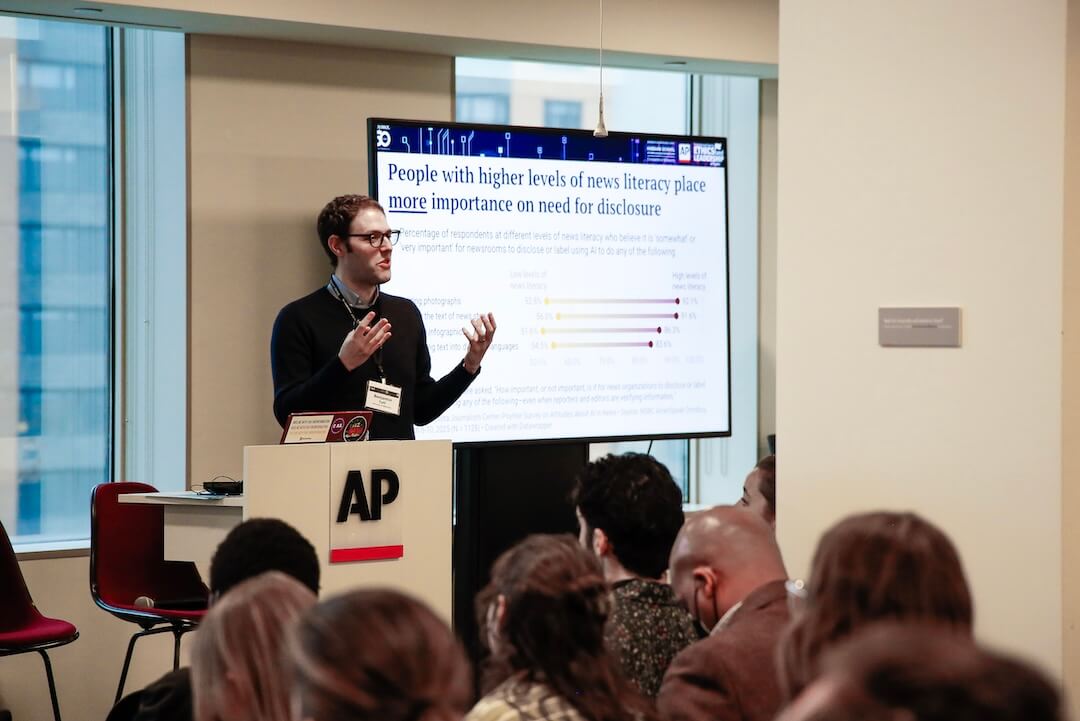Whenever possible, build the first version of your journalism site/product/service before approaching potential funders. That way you can demonstrate that your product is already working. It’s more effective to talk about what you’re doing now than to speak about what you hope might happen someday.
Whether or not you have live material to show, though, it’s important to be able to articulate your vision. Potential investors — and potential partners or employees — want to hear about your specific plans and strategy. Unlike friends or colleagues, outside investors may care little about your idea’s social value.
Even journalism foundations concerned with social value and sustainability will want to gauge both your business acumen and your project’s financial potential. Foundations don’t mind funding a project’s runway stage, but they want to know how you plan to subsist beyond the project’s infancy. Here are five issues to address in your funding meetings:
Say you’re pitching a new photo-centric community site for local bird-watching enthusiasts. How many people are you aiming at? Who are these people? What sites do they visit now? What’s their demographic breakdown? If you don’t have at least preliminary answers to these kinds of basic questions, you won’t come across as a credible entrepreneur.
Sculpt your market research into a dozen or so key insights you can communicate clearly to illustrate your audience’s size and scope. Present your audience research in the form of some simple one or two-sentence facts, and note your source.
For Example: “There are 50,000 active birders who live in this urban area, according to a recent survey by the national birding association of record. That figure conforms to other research done recently, including an academic survey by an ornithologist at the local university. In the association’s last survey, the birders in this area were more likely than those based in other cities to report that they didn’t yet have a go-to site for access to local images and information about area birding.”
Save some of your facts/insights to use when answering questions about your market. Your ability to reply intelligently with fact-based insights will say a great deal about your preparation and seriousness.
Who will provide revenue for your product or service? If you’re aiming for advertising revenue, how much are target advertisers paying for ad space elsewhere? Research on this point is crucial. It’s also vital to prepare a strong answer to the following question: What new value will you bring to advertisers to make it worth their while to partner with you? Having at least one advertiser who you work with and learn from early on is a valuable way to develop answers to these questions.
You may hope that advertisers will work with you out of friendship, or because of the service you’re providing for a community, or because you’re a great salesperson, but it’s better to rely on a demonstrable value proposition. That entails quantifying, or at least estimating, the additional value you can bring to an advertiser who chooses your option over an alternative.
What it boils down to is that ad customers will seek you out if you reach their audience and save them money in comparison with their available alternatives. They will gladly pay you a share of the value you create by saving money for them. That’s how successful publishing has always worked, and continues to work online. Potential investors want to have a sense of how you will add value for advertisers.
Example: Let’s say a chain of photography stores in the area currently markets to half of the 50,000 local birders through a combination of direct mail, local newspaper advertising, and sponsorship at regional birding events. The chain spent $10,000 to reach the growing community of area birders last year. The campaign brought in about $10,000 worth of business, based on an assessment of discount codes used for purchases. The campaign was therefore of negligible benefit.
To persuade the chain to advertise with our startup venture, we have to provide a clear proposal that details multiple benefits for the advertiser, such that the potential gain outweighs any risk. The solution? Provide the advertiser with a customized, affordable ad plan that combines pay-per-click ads with display ads and event sponsorship, so the chain can reach more potential customers this year at a lower cost.
If you are planning to generate revenue directly from your audience, what do they or others like them already pay for related products? Bone up on current market conditions, ad rates and other relevant facts and figures.
When pitching your ideas, also consider these factors:
Tell stories that grab listeners’ attention
Anecdotes: In their excellent book, “Made to Stick,” Chip and Dan Heath make the case that telling stories is one of the most powerful ways of making a pitch memorable. Any presentation you give should have stories that illustrate the need for your product or its efficacy. Venture capitalists frown on empty jargon, but stories capture people’s attention. Adding stats and specific numbers to your anecdotes generally adds to their impact.
Team: Talk about your partners and the specific achievements that demonstrate their capabilities. Share some highlights about your own background. Detail some specific achievements, even if they occurred in another arena; success reflects well on you and your potential.
Costs: Estimate the key expenses you anticipate you’ll face in the immediate future. Be prepared to articulate what you’re spending and why, and how a potential investment would impact your business.
Perfecting the pitch: Keep your presentation as short and simple as possible. Use few, if any, slides. Rely instead on stories, facts and examples. Focus on the problem you’re solving, rather than your personal motivation. Investors don’t care that you were getting bored doing something else or that you have always wanted to do this. What they want to know is whether or not this project is viable.
Focus on the facts, the market potential, the challenges, the progress that you’ve already made, and the next steps you have planned. Be candid and concise. End by articulating “the ask,” which details what you want from the investor or potential partner. You won’t get what you don’t ask for.






